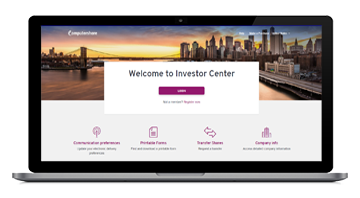Market outlook: macro themes that could influence returns in the months ahead
In recent months, investors have gone from worrying about the impact of interest-rate normalization to seriously thinking about the potential implications of negative interest rates. As we move into the next phase of the global economic recovery, albeit one that coincides with a new COVID-19 outbreak, the search for yield is becoming increasingly urgent.

Short-term macroeconomic themes
In our view, the worst of the COVID-19 shock and recession is likely behind us, although there are continuing risks to the recovery. Unsurprisingly, we’re still operating in an environment defined by extraordinary uncertainty.
While the first phase of the global economic recovery has been encouraging, we expect momentum to slow over the coming 6 to 12 months. As another outbreak of the coronavirus flares as of this writing, a full resumption of economic activity in the global services sector is likely to be constrained by social distancing measures. Rising geopolitical risks globally also look set to heighten the level of uncertainty for businesses and households alike.
The ongoing economic recovery is likely to be uneven. Broadly speaking, the manufacturing sector is likely to recover at a quicker pace than the services sector, which remains mired in COVID-19-related complications. This atypical recession/recovery environment implies that companies and countries more leveraged to manufacturing (e.g., industrials, Asia) should outperform those that are more leveraged to the services sector (e.g., retail, the United States).
On the policy front, we expect most major central banks to engage in further easing, although this will, for the most part, involve little more than tinkering with existing tools as opposed to implementing additional rate cuts. However, we expect central banks to respond forcefully to any sharp increase in yields—this should ultimately keep global government bond yields trading within a narrower range than what we’ve seen historically. Crucially, we expect fiscal policy to become a stronger driver of not just economic growth, but also inflation expectations.
Longer-term strategic views
We don’t expect any major central bank to raise interest rates in the next five years; however, we concede that there could be attempts to normalize monetary policy by shrinking central bank balance sheets in a few years’ time. This implies investors will need to get used to the idea that interest rates will likely stay at or below 0% for the foreseeable future. This should usher in another period in which the search for yield becomes a key market theme once again, pushing investors further out on the risk spectrum in exchange for meaningful returns.
While we continue to incorporate the structurally deflationary impulses of an aging demographic, rising debt, and ongoing digitalization into our forecast, we recognize that the combined impact of substantial monetary and fiscal easing—not to mention a global supply-side shock—will likely generate higher inflation expectations.
We expect the U.S. dollar to soften over the next few years. The U.S. Federal Reserve’s efforts to improve U.S. dollar (USD) liquidity should, in our view, help address the dollar shortage issue and contribute to the currency’s gradual weakening over time. As conventional investment wisdom suggests, a weaker greenback should provide some mild to moderate support to emerging-market (EM) assets.
Finally, we believe China—and, by extension, Asia—will benefit from a relative strengthening of the global manufacturing and trade environment. We continue to expect economic growth in China to structurally decelerate over the multi-year horizon as it moves toward a consumer growth model. Outside of China, we expect EM to maintain an attractive valuation profile, benefiting from a global cyclical upswing/rebound, aided by a structurally weaker USD.
Conclusion
Investor uncertainty remains high and caution is prevailing; however, we believe risk assets have more room to run in the coming year, albeit at a more moderate pace. In our view, investors should continue to push into equities from a return-seeking perspective—we should see higher equity price levels in the coming year, although the journey isn’t likely to resemble a linear move in price levels.
With the U.S. election in the rearview mirror, we’d expect to see more support for risk assets ahead as the potential for more monetary and fiscal support and prospects for further medical advancements through vaccines and/or therapeutics for COVID-19 come into view.
Important disclosures
Important disclosures
Views are those of the author(s) and are subject to change. No forecasts are guaranteed. This commentary is provided for informational purposes only and is not an endorsement of any security, mutual fund, sector, or index. Past performance does not guarantee future results.
MF1406279







